It looks like you're using an Ad Blocker.
Please white-list or disable AboveTopSecret.com in your ad-blocking tool.
Thank you.
Some features of ATS will be disabled while you continue to use an ad-blocker.
share:
We conducted a cluster-randomized trial to measure the effect of community-level mask distribution and promotion on symptomatic SARS-CoV-2 infections in rural Bangladesh from November 2020 to April 2021 (N = 600 villages, N = 342,183 adults). We cross-randomized mask type (cloth vs. surgical) and promotion strategies at the village and household level. Proper mask-wearing increased from 13.3% in the control group to 42.3% in the intervention arm (adjusted percentage point difference = 0.29 [0.26, 0.31]). The intervention reduced symptomatic seroprevalence (adjusted prevalence ratio = 0.91 [0.82, 1.00]), especially among adults 60+ years in villages where surgical masks were distributed (adjusted prevalence ratio = 0.65 [0.45, 0.85]). Mask distribution and promotion was a scalable and effective method to reduce symptomatic SARS-CoV-2 infections.
Science Journal Link
Study posted to journal December 2.
Study size: 600 villages, ~342,000 people
Interestingly, the authors of this study wanted to challenge the CDC guidance on masks.
The World Health Organization declined to recommend mask adoption until June 2020, citing the lack of evidence from community-based randomized-controlled trials, as well as concerns that mask-wearing would create a false sense of security (12). Critics argued those who wore masks would engage in compensating behaviors, such as failing to physically distance from others, resulting in a net increase in transmission (13). We directly test this hypothesis by measuring physical distancing.
We designed our trial to encourage universal mask-wearing at the community level, rather than mask-wearing among only those with symptoms. We encouraged even healthy individuals to wear masks since a substantial share of COVID-19 transmission stems from asymptomatic or pre-symptomatic individuals (14), and masks may protect healthy wearers by reducing the inhalation of aerosols or droplets (15–17).
Now the results of masks impact on viral transmission
In villages randomized to receive surgical masks, the relative reduction in symptomatic seroprevalence was 11% overall, 23% among individuals aged 50-60, and 35% among those over 60 in preferred specifications. We found clear evidence that surgical masks are effective in reducing symptomatic seroprevalence of SARS-CoV-2. While cloth masks clearly reduce symptoms, we find less clear evidence of their impact on symptomatic SARS-CoV-2 infections, with the statistical significance depending on whether we impute missing values for non-consenting adults.
Interesting! Here is another important point the authors want us to keep in mind..
Our results should not be taken to imply that mask-wearing can prevent only 10% of COVID-19 cases, let alone 10% of COVID-19 mortality. Our intervention induced 29 more people out of every 100 to wear masks, with 42% of people wearing masks in total. The total impact with near-universal masking–perhaps achievable with alternative strategies or stricter enforcement–may be several times larger than our 10% estimate.
Fascinating, there could be more than a 10% reduction in symptomatic Covid 19 cases if masking adoption rates may have been higher. They do acknowledge that cloth masks has less verifiable impact, but the believe it would have a positive effect none the less.
Now, let’s take a look at some numbers…according to worldometer, the US has had 59 million cases. The conservative 11% reduction could equate to approximately 6.5 million less cases! I would imagine that would also mean there would be a relative reduction in the 800k deaths. Imagine if all safety protocols were followed more closely….
edit on 7-1-2022 by MDDoxs because: (no reason given)
OK
Hear this.
The mask help those with allergics (sp ) to the pollinations of the plants.
The flu with washing hands before eating helps
the mask do nothing to help stop the spread of this air borne what ever the hell it is, PERIOD
Hear this.
The mask help those with allergics (sp ) to the pollinations of the plants.
The flu with washing hands before eating helps
the mask do nothing to help stop the spread of this air borne what ever the hell it is, PERIOD
Spam
edit on 1/7/2022 by semperfortis because: (no reason given)
originally posted by: musicismagic
OK
Hear this.
The mask help those with allergics (sp ) to the pollinations of the plants.
The flu with washing hands before eating helps
the mask do nothing to help stop the spread of this air borne what ever the hell it is, PERIOD
The study proves otherwise. So, your comment has no credibility.
originally posted by: MDDoxs
originally posted by: musicismagic
OK
Hear this.
The mask help those with allergics (sp ) to the pollinations of the plants.
The flu with washing hands before eating helps
the mask do nothing to help stop the spread of this air borne what ever the hell it is, PERIOD
The study proves otherwise. So, your comment has no credibility.
I disagree .
the what ever is is contacts and stays on the mask and we breath it.
take the subways
why are not the japanese govt. taking test at the subways with those wearing mask
well because it will crush the fact what you just posted about my thread
I have respect for you but business go on in this country with over 10 million riders in tokyo
We can not kill the economy because of the truth, mask are only good for during the pollination season here.
We have always have the flu season with people wearing the mask for the last 40 years.
this virus is very unusual to say the least
a reply to: MDDoxs
And were the villagers on anything such as therapeutics, or better living conditions, or eating better.
I would make the argument those who took the time to “correctly” wear a mask were probably more likely to eat better, take better care of themselves, and were probably more likely to isolate (hide from the world)
And were the villagers on anything such as therapeutics, or better living conditions, or eating better.
I would make the argument those who took the time to “correctly” wear a mask were probably more likely to eat better, take better care of themselves, and were probably more likely to isolate (hide from the world)
edit on 7-1-2022 by neutronflux because: Added
originally posted by: neutronflux
a reply to: MDDoxs
Is 10% really detectable in a study like this, or an expected range for error of analysis…..
Read the study. The results were found to be statistically significant. So yes, they have a definitive result.
originally posted by: neutronflux
a reply to: MDDoxs
And were the villagers on anything such as therapeutics, or better living conditions, or eating better.
I would make the argument those who took the time to “correctly” wear a mask were probably more likely to eat better, take better care of themselves, and were probably more likely to isolate (hide from the world)
Read the study. The study was randomized.
a reply to: MDDoxs
It seems a study can be made to read anything. Reminds me of…..
What’s printed on the side of procedural mask boxes…. For legal reasons?
It seems a study can be made to read anything. Reminds me of…..
FTC Halts Bogus Claims For Fuel Saving Device
www.ftc.gov...
In October 2004, the FTC filed a suit in U.S. district court alleging that marketers, and the resellers working with them, were making deceptive claims for FuelMAX and Super FuelMax products. The Web site operators and their affiliates – spammers who drove traffic to their sites – made claims such as:
Increases gas mileage 27%;
What’s printed on the side of procedural mask boxes…. For legal reasons?
edit on 7-1-2022 by neutronflux because: Added and
fixed
a reply to: neutronflux
The study is peer reviewed and published in a credible journal. The conclusions are quite clear.
The study is peer reviewed and published in a credible journal. The conclusions are quite clear.
So when around people who are vulnerable wear a mask, for the rest of us, the 99.9% of the worlds population who aren't in danger life goes on as
normal.
edit on th011855 by Smigg because: (no reason given)
originally posted by: MDDoxs
a reply to: neutronflux
The study is peer reviewed and published in a credible journal. The conclusions are quite clear.
And when does peer review mean correct? Is that state law?
Just to be clear, if there is no live sample of the virus available for anyone to see, then how do they know someone was even affected by coronavirus
and its 125 variants and not the flu or common cold? There is nothing to compare the alleged variants to. The only thing they ever show us besides the
fake cgi animation was a dead sample of something they claim is coronavirus but it has graphene stitching on it....obviously that occurs in nature all
the time (sarc)
The current population of Bangladesh is 167,158,346 as of Tuesday, January 4, 2022,
Just a couple of points it doesn't look like Bangladesh is getting hit hard at all for a country with such a large population and its population density of 1,094 per square km
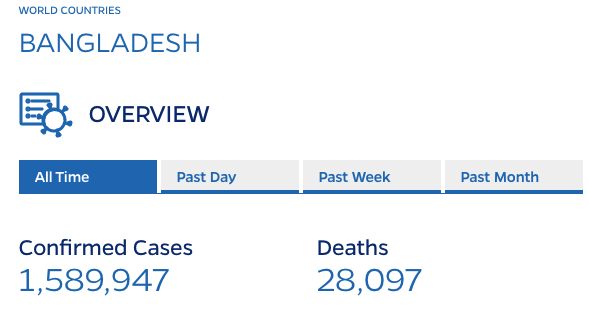
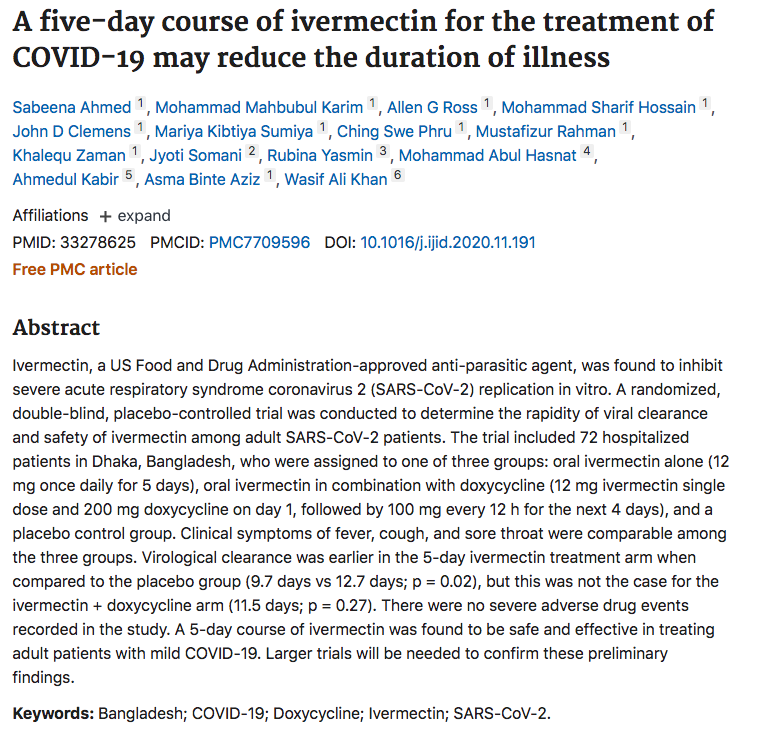
Just a couple of points it doesn't look like Bangladesh is getting hit hard at all for a country with such a large population and its population density of 1,094 per square km


originally posted by: neutronflux
a reply to: MDDoxs
Is 10% really detectable in a study like this, or an expected range for error of analysis…..
10 percent is well within the detectable range, you'd expect maybe a 2 or 3 percent margin for error, this is a statistically significant output and could result in several tens of thousands fewer cases when expanded to a national level.
originally posted by: putnam6
The current population of Bangladesh is 167,158,346 as of Tuesday, January 4, 2022,
Just a couple of points it doesn't look like Bangladesh is getting hit hard at all for a country with such a large population and its population density of 1,094 per square km
They're not checking nearly so much as in Western countries, and there is a greater stigma among the populace at large, which could be suppressing reported figures
originally posted by: MDDoxs
a reply to: neutronflux
The study is peer reviewed and published in a credible journal. The conclusions are quite clear.
Where do we find the peer reviews to check them out.
There were no eLetters at the bottom of article. Serious thanks in advance.
originally posted by: BerkshireEntity
Just to be clear, if there is no live sample of the virus available for anyone to see,
It was isolated two years ago this month, and samples are readily available.
originally posted by: AaarghZombies
originally posted by: putnam6
The current population of Bangladesh is 167,158,346 as of Tuesday, January 4, 2022,
Just a couple of points it doesn't look like Bangladesh is getting hit hard at all for a country with such a large population and its population density of 1,094 per square km
They're not checking nearly so much as in Western countries, and there is a greater stigma among the populace at large, which could be suppressing reported figures
I agree 100% there are kinds of variables in play here, It's obviously a viable study. I'd like to know more about Bangladesh's COVID timeline to see if this coincided with a wave or a trough in COVID infections. As well as their normal deaths by year
FWIW Ive got no problem with those at risk, the elderly, and those with respiratory issues wearing masks. It's just the mandating them to be worn.
When do we discuss the COVID elephant in the room, with skyrocketing verified case counts, we aren't seeing a corresponding degree of rising in deaths. It's a much much less ratio than the ATH, is it not?
Here are the past month's totals it's way off the all-time highs
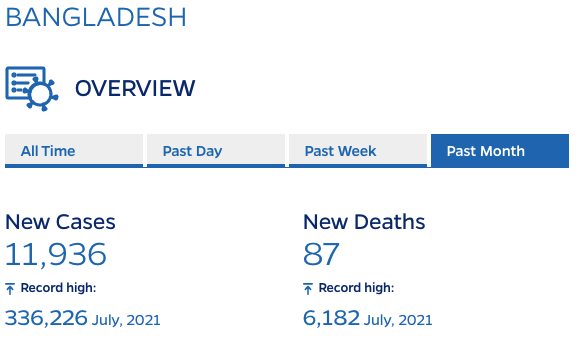
metrics.covid19-analysis.org... in_click=%7B%22lat%22%3A22.8571947009697%2C%22lng%22%3A89.5520492984407%2C%22.nonce%22%3A0.855937123681252%7D&compare_metric=%5B%22rt%22%2C%22case_rat e%22%2C%22death_rate%22%5D&compare_submit=0&table_select_resolution=%22auto%22&table_date=%222021-11-15%22&select_resolution=%22country%22&compare_sel _states=null&compare_sel_counties=null
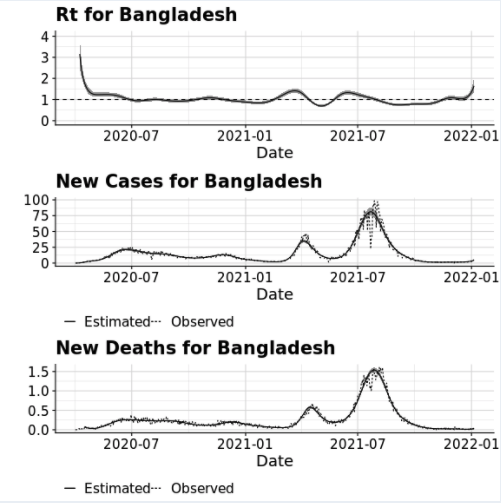
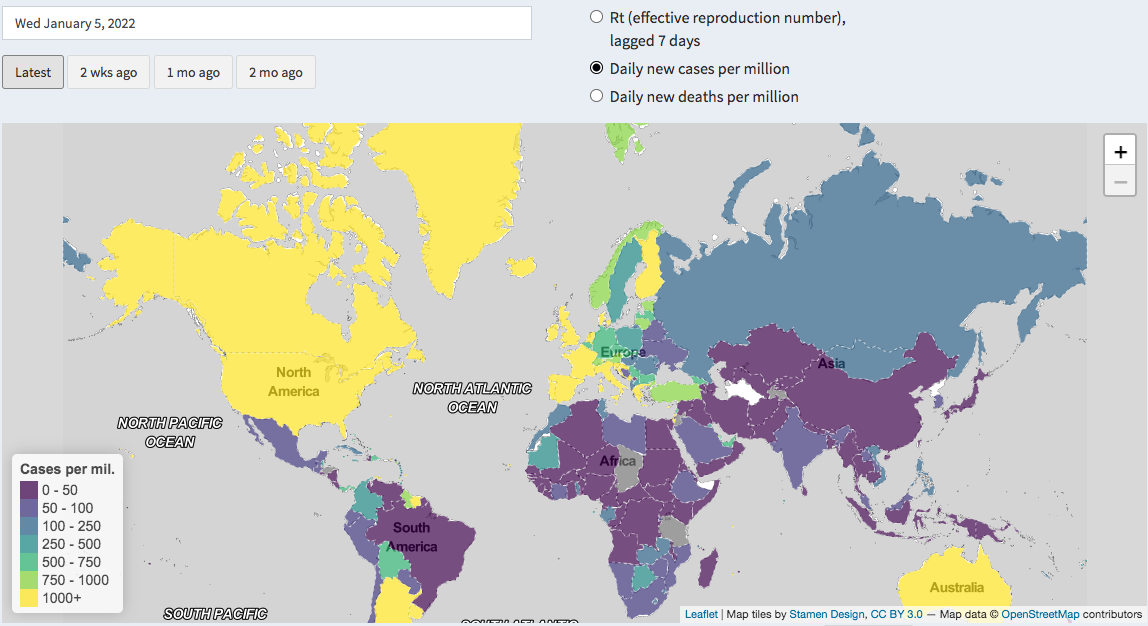
edit on 7-1-2022 by putnam6 because: (no reason given)
new topics
-
France gives Ukraine license to fire long-range missiles at Russia
World War Three: 1 hours ago -
Stalker 2 - Review from a Veteran
Video Games: 4 hours ago -
Does anyone have a link to download apple pay for androids
General Chit Chat: 5 hours ago -
Most INSANE internet rabbit hole
Secret Societies: 6 hours ago -
Joe Rogan conspiracy (maybe)
ATS Skunk Works: 9 hours ago
top topics
-
Results of the use of the Oreshnik missile system in Dnepropetrovsk
World War Three: 12 hours ago, 14 flags -
Most INSANE internet rabbit hole
Secret Societies: 6 hours ago, 8 flags -
France gives Ukraine license to fire long-range missiles at Russia
World War Three: 1 hours ago, 5 flags -
Nigel Farage now the Most Favoured UK Politician
Regional Politics: 13 hours ago, 4 flags -
Joe Rogan conspiracy (maybe)
ATS Skunk Works: 9 hours ago, 4 flags -
Stalker 2 - Review from a Veteran
Video Games: 4 hours ago, 2 flags -
Does anyone have a link to download apple pay for androids
General Chit Chat: 5 hours ago, 1 flags
active topics
-
France gives Ukraine license to fire long-range missiles at Russia
World War Three • 3 • : WeMustCare -
President-Elect DONALD TRUMP's 2nd-Term Administration Takes Shape.
Political Ideology • 243 • : WeMustCare -
Inca stone masonry at Sacsayhuaman, Ollantaytambo and the Sun Temple
Ancient & Lost Civilizations • 12 • : Astrocometus -
Will Us use alien technology to fight in ww3?
World War Three • 16 • : CosmicFocus -
President-Elect TRUMP Picks Former Florida A.G. PAM BONDI to be U.S. Attorney General.
2024 Elections • 61 • : xuenchen -
-@TH3WH17ERABB17- -Q- ---TIME TO SHOW THE WORLD--- -Part- --44--
Dissecting Disinformation • 3362 • : 777Vader -
Post A Funny (T&C Friendly) Pic Part IV: The LOL awakens!
General Chit Chat • 7817 • : underpass61 -
Joe Rogan conspiracy (maybe)
ATS Skunk Works • 7 • : TruthJava -
Results of the use of the Oreshnik missile system in Dnepropetrovsk
World War Three • 165 • : RickyD -
Most INSANE internet rabbit hole
Secret Societies • 3 • : DontTreadOnMe
